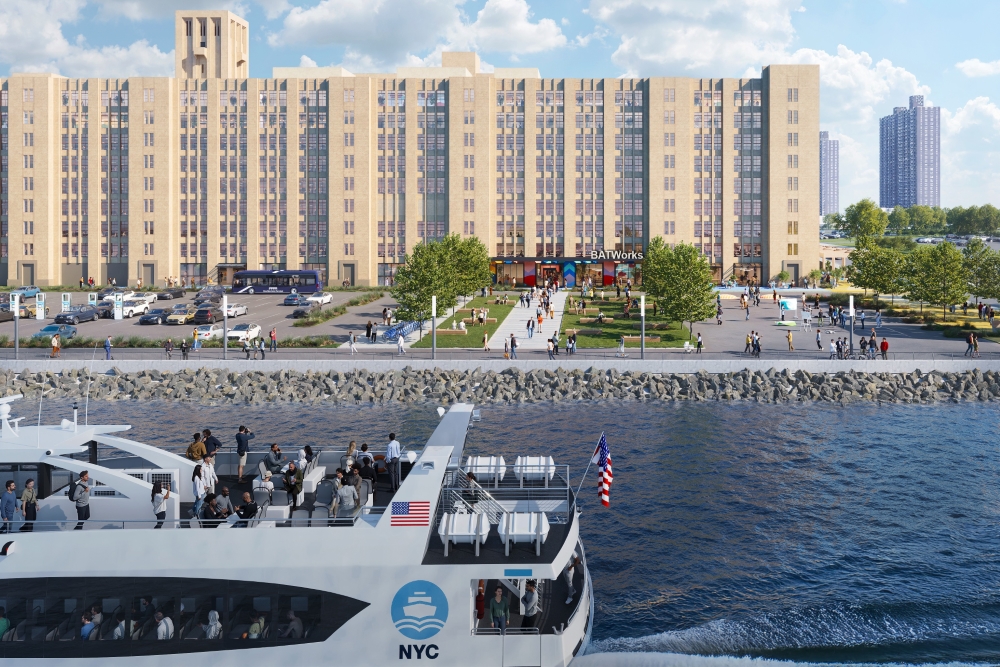Inventions pioneered throughout the Great Lakes region have delivered pivotal chain reactions leading to how we experience everyday life around the globe.
Enjoy checking your cell phone when you wake up? Motorola paved the way with the development of the world’s first cell phone in Illinois. Is the route to and from work filled with other vehicles? Henry Ford’s invention of the modern automotive assembly line in Michigan revolutionized mass production. Is there a certain temperature you maintain in your home? That was made possible through the first practical air conditioning system created in New York.
The list goes on across the eight U.S. states and two Canadian provinces of the region — Minnesota, Ohio, Wisconsin, Pennsylvania, Indiana, New York, Michigan, Illinois, Ontario, and Quebec — where a curious entrepreneurial spirit continues to accelerate. A natural knack for driving local innovation, whose developments often find a role on a greater global landscape, has garnered domestic and international interest in the research and development capabilities of Great Lakes talent for generations.
One of the most beneficial inventions of modern times is the development of dedicated innovation hubs built upon thriving local industry ecosystems. The combination of academia, industry expertise, skilled talent and regional or federal government support to align community resources has proved to be a gamechanger for new levels of collaboration and rising talent demand.
Going Green
In the latest example taking place in New York, the Los Angeles Cleantech Incubator (LACI) and the Cambridge Innovation Center teamed up on a new consortium that will introduce “BATWorks,” a new climate innovation hub in the Sunset Park neighborhood of Brooklyn.
Located at the Brooklyn Army Terminal, the hub is preparing to become a one-stop-shop for startups, entrepreneurs and talent driving cleantech solutions. BATWorks is anticipated to play a key role in expanding New York City’s climate tech ecosystem once fully operational in 2028. A smooth green economy transition is top of mind for the entire state, whose climate agenda outlines goals such as 100% zero-emission electricity by 2040; about 70% renewable energy generation by 2030; and carbon neutrality by 2050.
To support the initiative, the New York City Economic Development Corporation (NYCEDC) is investing $100 million into the future facility, in addition to $450 million to modernize the historic campus and bring new leasable space online. This funding alone will aid in the creation of 600 jobs, support 150 startups and contribute a $2.6 billion economic impact.
“The hub will offer specialized physical facilities such as prototyping spaces, laboratories and workspaces,” says NYCEDC Press Associate Kate Cerwin. “It will offer robust programming including opportunities for piloting, convenings, workforce training and business development services to accelerate both startup and incumbent climate innovation businesses.”
Three key sector focus areas will be clean energy, zero-emissions transportation and buildings decarbonization. The 200,000-sq.-ft. facility will welcome emerging market innovators, small and medium-sized companies, and growth-stage and commercialization-stage companies to engage with fit-for-purpose space for product R&D, prototyping and piloting. Past these stages, BATWorks will help climate tech entrepreneurs and businesses navigate regulations and move forward with commercialization.
Aside from supporting innovative climate programming at the hub, LACI has plans to establish its first innovation sandbox outside of Los Angeles to support its City Climate Innovation Challenge, designed for startups looking to pilot new technologies. In addition, LACI will lead a “Pilot at BAT Program,” allowing climate tech companies to come develop and test products in a live built environment beginning in 2026.
“Emerging climate tech companies need to test, refine, de-risk and demonstrate their products for New York City’s complex urban environment,” says Cerwin. “BATWorks will support entrepreneurs and innovators in sectors such as transportation, energy and buildings to test and scale their technologies by operating the ‘Pilot at BAT’ program.”
New York City’s Green Economy Action Plan estimates that the city’s green economy will hold 400,000 jobs by 2040. Local higher education institutions CUNY and NYU are set to help create programming for BATWorks and increase awareness of “green-collar” jobs coming down the pipeline. These programs will range from workforce development programs to startup services and various K-12 programming designed to connect industry and academic research in New York.
Staying Ahead of AI
In Quebec, artificial intelligence has served as a key growth point since the early 1990s. It led to the development of Mila, an AI research institute located in Montreal, which has become one of the largest machine learning academic research centers in the world.
University of Montreal AI researcher Yoshua Bengio in 1993 created a dedicated research lab for deep learning and machine learning exploration. This activity saw significant expansion in 2017, through collaborations with Quebec academic institutions McGill University, Polytechnique Montréal and HEC Montréal. That same year this formula was emulated in Ontario with the creation of the Vector Institute in Toronto.
Now there are more than 1,400 students, researchers, professors, industry partners and entrepreneurs that frequent Mila in the pursuit of advancing technological innovation. Aside from the almost 120 industry partners that seek out Mila’s portfolio of expertise and local talent for AI solutions, the institute has served as the launchpad for nearly 40 new AI-focused startups. These homegrown companies span industries such as aerospace, health care, business and financial services, energy and forestry, to name a few.
In July 2025, Mila launched a new partnership with Creative Destruction Lab Montreal and NEXT AI Montréal designed to unlock a unique opportunity for entrepreneurs to tap into the trio’s resource tool belt. The AI Passport initiative aims to scale AI-focused entrepreneurship in the province, providing selected participants with an array of expertise, resources and access to activities available through these organizations.
“The AI Passport represents a new way of collaborating to better support entrepreneurs who are building the future of artificial intelligence,” said NEXT AI Montreal Director Maud Razafindramboa. “It creates a unique continuum of resources for high-potential AI projects.”

